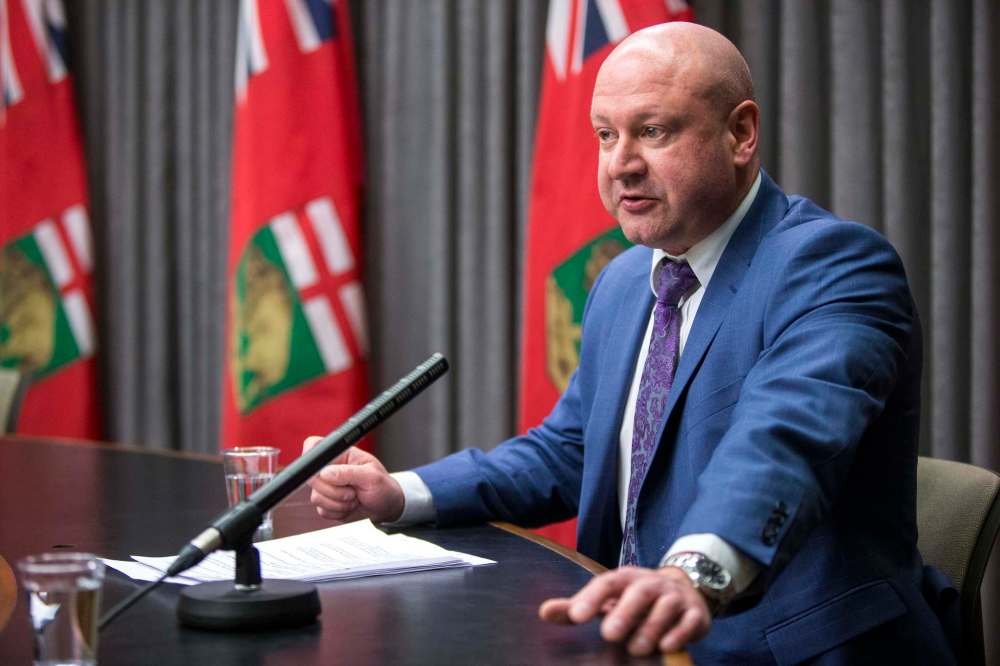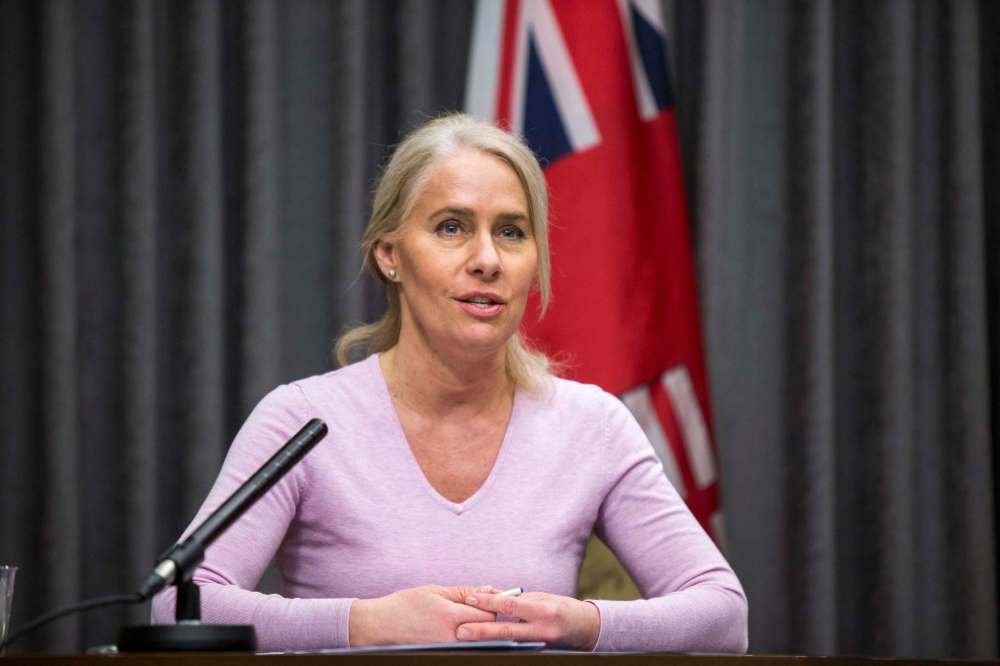Amid pandemic pandemonium, tough decisions essential
Read this article for free:
or
Already have an account? Log in here »
To continue reading, please subscribe:
Monthly Digital Subscription
$0 for the first 4 weeks*
- Enjoy unlimited reading on winnipegfreepress.com
- Read the E-Edition, our digital replica newspaper
- Access News Break, our award-winning app
- Play interactive puzzles
*No charge for 4 weeks then price increases to the regular rate of $19.95 plus GST every four weeks. Offer available to new and qualified returning subscribers only. Cancel any time.
Monthly Digital Subscription
$4.99/week*
- Enjoy unlimited reading on winnipegfreepress.com
- Read the E-Edition, our digital replica newspaper
- Access News Break, our award-winning app
- Play interactive puzzles
*Billed as $19.95 plus GST every four weeks. Cancel any time.
To continue reading, please subscribe:
Add Free Press access to your Brandon Sun subscription for only an additional
$1 for the first 4 weeks*
*Your next subscription payment will increase by $1.00 and you will be charged $16.99 plus GST for four weeks. After four weeks, your payment will increase to $23.99 plus GST every four weeks.
Read unlimited articles for free today:
or
Already have an account? Log in here »
Hey there, time traveller!
This article was published 20/03/2020 (2121 days ago), so information in it may no longer be current.
One thing we’re learning from the COVID-19 pandemic is decisions made by public-health officials are not always easily understood. What may seem like obvious measures to fight the disease – such as shutting schools and day cares at the earliest opportunity – aren’t always clear cut.
Public-health officials have had to make tough decisions in recent weeks on a wide range of issues, including when to close schools and daycares, who to test for the disease, and when health-care workers who have travelled abroad should return to work. To many, those decisions may seem like obvious ones: the virus is spreading quickly and we should just shut everything down and test everyone with a dry cough.
But it’s more complicated than that.

For example, in some jurisdictions, such as Quebec, officials are keeping schools and daycares open with limited access. They’ve realized shuttering them outright may do more harm than good.
Closing schools and daycares means many essential workers (including some in health care) can’t work because they have to stay home with their children. Providing them with child care allows them to stay on the job to help fight the pandemic.
Manitoba moved in that direction Friday. The province announced it will allow daycares to operate with a maximum of 16 children for families with health-care staff. It’s the right move. Premier Brian Pallister said the province will continue to assess the situation to determine if that should be expanded further. It probably should. Friday’s announcement won’t come close to providing essential workers (including emergency response personnel and others) with the amount of coverage they’ll need, especially once the number of COVID-19 cases starts to soar. Manitoba may want to consider the Quebec model.
Opening schools again (they’re closed after Friday) may seem counterintuitive, but in a controlled environment with limited access, it may be the best option.
Meanwhile, many people are asking why there isn’t more testing for COVID-19 to better isolate those who have the disease. Some are even calling for the testing of anyone showing symptoms. That may seem like the obvious thing to do. After all, didn’t the World Health Organization say recently that the key to fighting this disease is to “test, test, test?”
It’s not that simple. The province doesn’t have the laboratory capacity to test everyone with flu-like symptoms. Manitoba’s labs are already running at, or near, capacity.
With few exceptions, the province only tests those with symptoms who have travelled internationally. (They also test some in nursing homes and intensive care units). They target those they believe are at the highest risk of contracting the disease. They do so not only to isolate them, but to track the people they had close contact with (to isolate them, too).

Questions have also been raised about why some health-care staff who have travelled abroad are asked to return to work before completing their 14-day self-isolation period. It may seem obvious that self-isolation should be a hard-and-fast rule, but it isn’t. The reason is some health-care professionals, including critical-care nurses, have skills and training that can’t be replaced. They help save lives. They’re needed on the front lines. As a result, exceptions are made for some who aren’t showing symptoms (using precautions such as wearing masks and not treating high-risk patients).
These are the types of difficult decisions public-health officials make every day. It’s not a sign that they’re taking the disease lightly. They make decisions based on the best available information, to maximize the protection of society and to slow the spread of the disease. They’re not perfect, but so far, Manitoba’s public-health officials have done a remarkable job preparing for, and responding to, the early stages of COVID-19.
The decisions they make may not always seem like the obvious ones, but they’re informed by decades of experience and guided by public-health expertise from around the world, including from the WHO. These people know what they’re doing.
tom.brodbeck@freepress.mb.ca

Tom Brodbeck is an award-winning author and columnist with over 30 years experience in print media. He joined the Free Press in 2019. Born and raised in Montreal, Tom graduated from the University of Manitoba in 1993 with a Bachelor of Arts degree in economics and commerce. Read more about Tom.
Tom provides commentary and analysis on political and related issues at the municipal, provincial and federal level. His columns are built on research and coverage of local events. The Free Press’s editing team reviews Tom’s columns before they are posted online or published in print – part of the Free Press’s tradition, since 1872, of producing reliable independent journalism. Read more about Free Press’s history and mandate, and learn how our newsroom operates.
Our newsroom depends on a growing audience of readers to power our journalism. If you are not a paid reader, please consider becoming a subscriber.
Our newsroom depends on its audience of readers to power our journalism. Thank you for your support.







